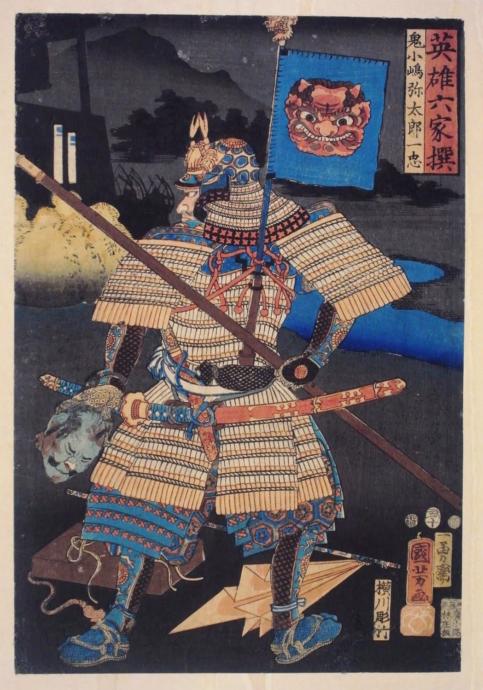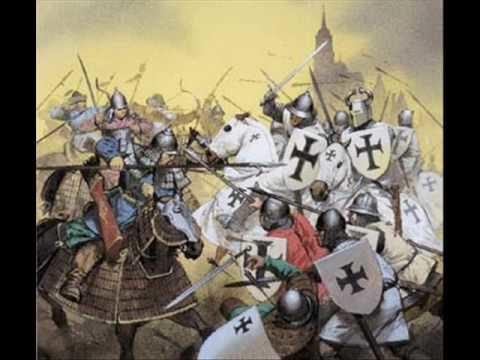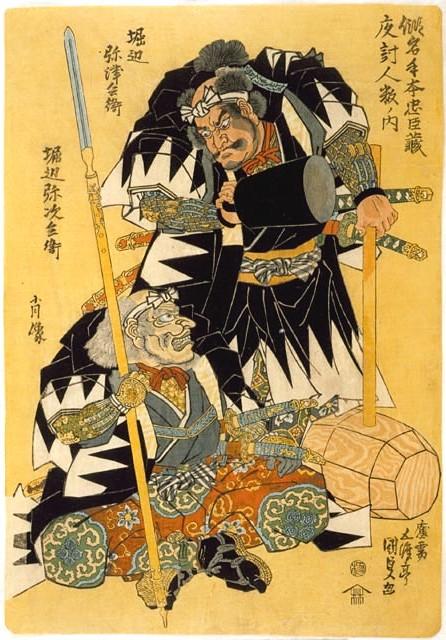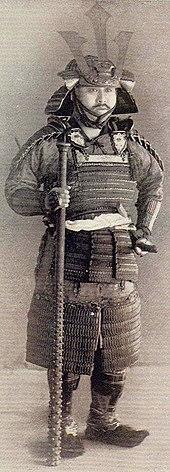The “Historical European Martial Arts”(HEMA) community has been around for a few decades, it has only risen in popularity within the last decade. The concept is good as it is meant to rediscover and preserve traditional European martial arts. However it is unfortunately used by a bunch of rascals who are more interested in trying to prove unfounded superiority of “HEMA” over other cultures’ martial arts. Most of this attitude is directed towards East Asian martial arts, specifically the Samurai Warrior culture. And most of the arguments used by those ignoramuses within the HEMA community are oversimplifications and strawmans. These clowns are rather ignorant on East Asian martial arts, specifically on The Samurai and also hypocritical.
- HEMA fanatics complain about the romanticization of the Samurai and also like to call people “weebs” just for being fascinated by the Samurai. All while they romanticize Vikings, Knights, Spartans and Pirates.
- HEMA fanatics complain about the Katana being romanticized but don’t have a problem romanticizing the knights armor or the Viking shield.
Also, I’m not saying everyone in the HEMA community is like this. I know there are those within the HEMA community who are legit in simply wanting to learn more about European martial arts and are also open to learning about other cultures’ martial arts, these are HEMA practitioners. So HEMA cultists/fanatics and HEMA practitioners are two different groups who are not one and the same within the HEMA community. With that being said, let’s debunk the misconceptions HEMA cultists have about this hypothetical showdown.
1.) The Vikings weren’t actually towering brutes: Contrary to popular belief, Vikings weren’t actually 6’5”+ and 300lb+ individuals. On average, Viking men were around 5’6” while Viking women were around 5’1” both well under 200lbs. While the samurai were roughly 5’3” on average. So the idea that Vikings could just use their “tremendous size advantage” to overwhelm a samurai is nothing more than wishful thinking from the heightists among the HEMA cultists. Considering that there wasn’t that much of a size difference between the two.

2.) Height vs weight: Height and weight are two different traits that are measured differently. As such they don’t always correlate with each other. Weight matters a lot more than height does in bare hand combat. A 5’3” 200lb man is actually bigger than a 6’0” 170lb man, the shorter stocky guy will still have the size advantage over the taller lanky guy. The taller guy will only have the reach advantage, which the short guy can cancel out by taking the taller guy down. However the taller guy can’t really neutralize the shorter guy’s size(weight) advantage. If two combatants of different heights but of equal weight fight each other, there isn’t actually a size difference. So if a 5’3” 160lb samurai fought a 5’11” 160lb Viking in bare hand combat(jujutsu vs Glima), the fight could go either way depending on many other factors. For a modern example, the 5’10” 260lb Mark Hunt managed to knock out the 7’0” 265lb Stefan Struve in UFC. Some other misc factors in bare hand combat are the following.
- Speed
- flexibility
- mobility
- environment
- reflexes
- intelligence
- endurance
- health
- age
- state of mind
- Skill
- Overall strength
- grip strength
- dexterity

3.) The average samurai would still stand a good chance against a big Viking: The average Viking may have been 5’6” and under 200lbs but there were the exceptions who were a bit bigger. However they were not modern day heavyweight combat athletes. There were no steroids or other forms of enhancements, so even the few big Vikings would not be as physically capable as modern day professional strongmen or heavyweight MMA fighters. So it’s reasonable to assume the average samurai would be able to fight against a big Viking on even grounds especially since both combatants would primarily be relying on their weapons. And the Samurai did have techniques to defeat larger skilled opponents. An example of such techniques being used was when Minamoto no Yoshitsune managed to defeat the much larger Benkei who stood over 2 meters and probably weighed over 260lbs. In the video below, a flyweight named Stefer Rahardian manages to defeat a super heavyweight named Eric Duncan in a openweight Jiu Jitsu bout. The reason I show a grappling competition is because that’s how two armored opponents would fight without any melee weapons.
4.) Factors in melee weapon combat: Whoever has the longer weapon would be at a reach advantage. A fighter with a claymore would have a significant reach advantage over a fighter with a dagger. However, in tighter environments the fighter with the dagger would have the advantage. Some other factors in melee combat are the following.
- speed
- skill
- mobility
- reflexes
- environment
- Grip strength
- overall strength
- dexterity
- state of mind
- intelligence
- health
- age
- endurance
Also since there isn’t that much grappling or striking in melee weapon combat; height and weight aren’t as important. This scene from Game of thrones does a great job of depicting a melee weapon fight between a small person and large person
5.) Samurai primarily used pole arms: HEMA cultists will have you think that Samurai only used Katanas in order to promote the idea that Samurai would be at a tremendous reach disadvantage. However the truth is that the Samurai primarily relied on long spears known as Yari and the Naginata. The Katana was merely a secondary weapon for a samurai. So the idea that Samurai would always be at a reach disadvantage is false.

6.) Underestimating the Samurai: HEMA cultists have an annoying tendency to constantly complain about how the katana is romanticized. However HEMA cultists also like to romanticize the Viking shield as being able to withstand any offense the Samurai can launch. Their reasoning is that the Samurai didn’t rely on any kind of brute force and also didn’t have experience fighting enemies with shields. Both being false as the samurai did have brute force weapons, the Kanabō and Otsuchi. Both of these weapons would have been able to knock a Viking off balance even as the Viking blocked with his shield. Furthermore the Samurai did fight and beat the mongols who had shields, not to mention that early Samurai actually had shields before they discontinued them. So the idea that the Viking shield would catch the Samurai off guard is nonsense.
7.) Technology: The Samurai being around for much longer than the Vikings means that the Samurai actually would have the technological advantage. The Vikings existed between 793AD and 1066AD, while the Samurai existed between 600AD and 1870AD. Although Japanese warriors didn’t start to be called Samurai until the 12th century AD. The Samurai armor being full body lamellar armor is an example of a technological innovation. Depending on the era, there’s a point where the technological gap would be too much for the Vikings to overcome as the late Samurai had access to guns and explosives. For comparison: when the mongols invaded Europe; the Mongols effectively used explosives against European knights, allowing the Mongols to conquer parts of Eastern and Central Europe. So it wouldn’t be fair to put the Vikings against the late samurai as the Vikings wouldn’t be prepared to fight the Ashigaru armed with their Tanegashima matchlocks.

8.)Jujutsu vs Glima: Both the Samurai and Vikings developed their own bare hand combat systems. The Samurai used Jujutsu, while the Vikings used Glima. Both systems relied on grappling, since striking armored opponents is impractical. While we can’t actually compare the two directly, we can compare two similar martial arts that constantly clash. Judo and Wrestling. Both Judo and Wrestling have been rivals for so long as both styles are equally matched. Sometimes a Judoka wins and other times a wrestler wins. So in this sense, both the Samurai and Viking were even when it came to their bare hand combat systems. In the video below, a 5’11” welterweight Brazilian jiu jitsu competitor named Andre Galvao beats a 6’1” light heavyweight wrestler named Chael Sonnen by submission.
9.)Onna-musha: I guess it’s worth mentioning that while the Vikings had shield maidens, the Japanese had Onna-musha. These were women who would actually take up arms and fight alongside samurai. So contrary to what these progressive revisionists say, feudal Japan wasn’t as backwards as they want you to think.

10.) Samurai are adept in cavalry: Much like the myth of the Katana being the samurai’s main weapon. Many of those HEMA Cultists forget that the Samurai were cavalry men. They rode horses into battle. While the Vikings had horses, they did not specialize in cavalry as much as the samurai did. For comparison: when the mongols(who also specialized in cavalry) invaded Europe, the European knights had trouble fighting the Mongolian cavalry. And the Mongols managed to occupy various parts of Eastern and Central Europe.

11.) Advantages and equipment of both warriors: Let’s review all the advantages both of these warriors have over each other and also their main weaponry.


Samurai advantages:
- Lower center of gravity
- better dexterity
- Faster reflexes
- better mobility
- Strong Cavalry
- Superior Lamellar armor
- Experience fighting off technologically and numerically superior invasion forces.
- Matchlocks and explosives(late samurai)
Viking advantages:
- Slight weight advantage
- Slight reach advantage
- Better weapon quality
- Sturdy Shields
- Experience fighting various types of enemies
- Well made ships
- Chain mail and lamellar can protect from katana strikes
Samurai main weaponry: The samurai used a wide array of weaponry. Here are their main weapons
- Yari spear
- Naginata
- Yumi Bow
- Daishō katana
- Tanto knife
- Kanabō
- Otsuchi
- Ono war axe
- Gunpowder weaponry(late Samurai)
- Jujutsu
Viking main weaponry: The Vikings also used various types of weapons although not as diverse as the Samurai
- Viking sword
- Viking axe
- Viking bow
- Viking Shield
- Viking spear
- Viking knife
- Glima
12.) The hypothetical fights: So who would win? This is a question that many like to debate on the internet. But the truth is that the fight could go either way depending on many factors. Specifically when and where the fight takes place.
- The samurai would win if the Vikings tried to invade Japan. The Vikings would have had to travel all the way from the other side of the Eurasian landmass and by the time they arrived they’d be exhausted, possibly sick and confused all while the Samurai would be waiting for them to set foot on the beach sands. Furthermore, the Samurai would be fighting on their home soil and know the land better than the Norse invaders. When the Mongol empire tried to invade Japan in 1274 and 1281, the Samurai soundly repelled both Mongol invasions.
- The Vikings would win if the Samurai tried to invade Scandinavia. Had some samurai sailed to Scandinavia they would be exhausted, disoriented, hampered by the Arctic cold and confused while the Vikings wait for them to set foot on their lands.
- The Samurai would win in a tight environment. Being the slightly smaller of the two, the Samurai would have a mobility advantage fighting a Viking in a tight environment like inside a ship, cave or a castle corridor.
- The Vikings would most likely win a fight in freezing temperatures. While the Samurai are no strangers to the cold, the Vikings are more accustomed to Arctic climates than the Samurai would be. This would put the Vikings at a major advantage if the fight takes place in the Arctic.
- The Samurai would win in a cavalry battle. The samurai were extremely adept as cavalry men, most of their weaponry was designed to specifically fight from horseback. So the Samurai would definitely beat the Vikings in a cavalry battle.
- The late Samurai would win by using their technological advantage. As a result of cultural exchanges with the Chinese, Dutch and Portuguese; the late Samurai began to design and adopt weaponry made from the Chinese invention of gunpowder. Both matchlock and explosives, two types of weapons that would catch Vikings off guard.

Hypothetical/alternate history: We don’t know what would have actually happened if the Samurai and Vikings met because they never actually encountered each other. It’s also possible that there wouldn’t have been any hostility between the Samurai and Viking, only curiosity. There would actually have to be a big miscommunication for both the Samurai and the Vikings to duke it out. And if they did fight, the winner would depend on many factors some of which I’ve listed above.

Most Helpful Opinions